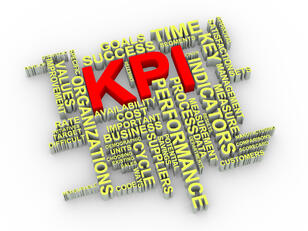05.03.2014
4 KPIs Crucial to On-Time Delivery


Materials is the root cause of at least 80% of missed delivery commitments. The only way to effectively drive consistent on-time delivery performance is by ruthlessly focusing on materials. Fortunately, material processes are very data-driven and can be successfully managed with a just a handful of crucial KPIs. The 4 crucial KPIs are:
1. Late Buy Actions
2. Items in Compression
3. Late Vendor POs
4. Push/Pull/Cancel Messages
Continue reading for a more in-depth look at each of these critical KPIs.
Late Buy Actions
Late buy actions is the count of buy actions that have not been taken within a given period of time. You must establish an expectation of how much time (usually a period of days) the assigned buyer has to place an MRP buy signal on order. This can vary from 1 day to 2 weeks or more, depending on the needs of your organization and how your ERP is set up. In a contract manufacturing environment, the expectations should be 1 day for quickturn and 1 week for production. Any buy action that ages beyond these times should be counted as late.
Items in Compression
This is the count of items in compression. Compression means an item with a buy action that is inside the lead time for that item. For example, on Jan. 1 a buy action appears for item XYZ for delivery on Feb 1. However, XYZ has a standard lead time of 60 days, suggesting it cannot be received until March 1. The standard lead time of 60 days will need to be shortened (compressed) to 30 days. Any buy action with a lead time longer than the need date should be counted as in compression.
Late Vendor POs
The count of line items late from vendors. For this measure, count all late line items that are 1 or more days past due. Count each line item as "1"; do not sum the quantity of each line item.
Push/Pull/Cancel
These are messages from ERP indicating the demand picture has changed in a way that requires modification to existing open purchase orders. A push message means the due date must be pushed out, avoiding excess inventory. Pull messages mean the due date must be pulled in to meet the manufacturing need. Cancel means the demand has evaporated and there is no foreseeable demand. Strictly speaking, only the pull messages are crucial to on-time delivery. We recommend counting each item with a message(s) as 1. So if a given item has both a push and a cancel message, count it as 1 instead of 2.
Discussion
If these four crucial KPIs are in line, your material flow must be correct to feed your line. For example, if all these KPIs are at 0, this means for all items that the correct quantity (Push/Pull/Cancel) is on order (Late Buy Actions), within lead time (Compression) and is on time (Late Vendor POs). If procurement focuses ruthlessly on delivering these KPIs, there will be no need for shortage meetings...we eliminated them years ago at Optimum.
What if you don't trust your ERP data? Well, you have a bigger problem! Untrustworthy ERP data is the number-one efficiency killer and should not be tolerated. Nothing reduces productivity faster than having to verify that ERP signals are "good." If you are a manager with this responsibility, fix it! If you just have to live with bad ERP data, the four crucial KPIs will still point you in the right direction but cannot guarantee success.
There are some exceptions to items that can be successfully tracked with these. In most environments it is easiest to exclude vendor managed inventory (VMI), floor stock, MRO, and similar items. It is possible to manage these commodities with the four crucial KPIs, but it is dependent on how the item attributes are set up in ERP, which is often beyond the scope of what most team members can impact.
Implementation
In most cases you will need to calculate the KPIs outside of your ERP software. There are two basic approaches we can point to, but a detailed description is beyond the scope of this article.
The first method is to export standard or custom reports in text or csv format. These can then be pulled into Excel and parsed.
The second method is to access the underlying data tables directly. With access to these tables you can create reports using tools like Crystal Reports, or even better, do ODBC lookups. ODBC is by far the best method if you have access.
Frequency
An excellent rule of thumb for reporting frequency is that performance will improve with frequency of feedback. This is basic game theory. In a basketball game, the players know the score in real time; they don't perform for 15 minutes and then get a report at the end of the quarter. They know immediately if they are falling behind and need to make adjustments. You might start by measuring the crucial KPIs weekly, and if they don't achieve your goals, start measuring them daily. At Optimum we use ODBC, calculate KPIs in real time, and push updates to users' phones three times a day. We have found always knowing the score has been the key to consistent on-time delivery performance.
Further Reading: 4 Ways To Eliminate Late Deliveries

